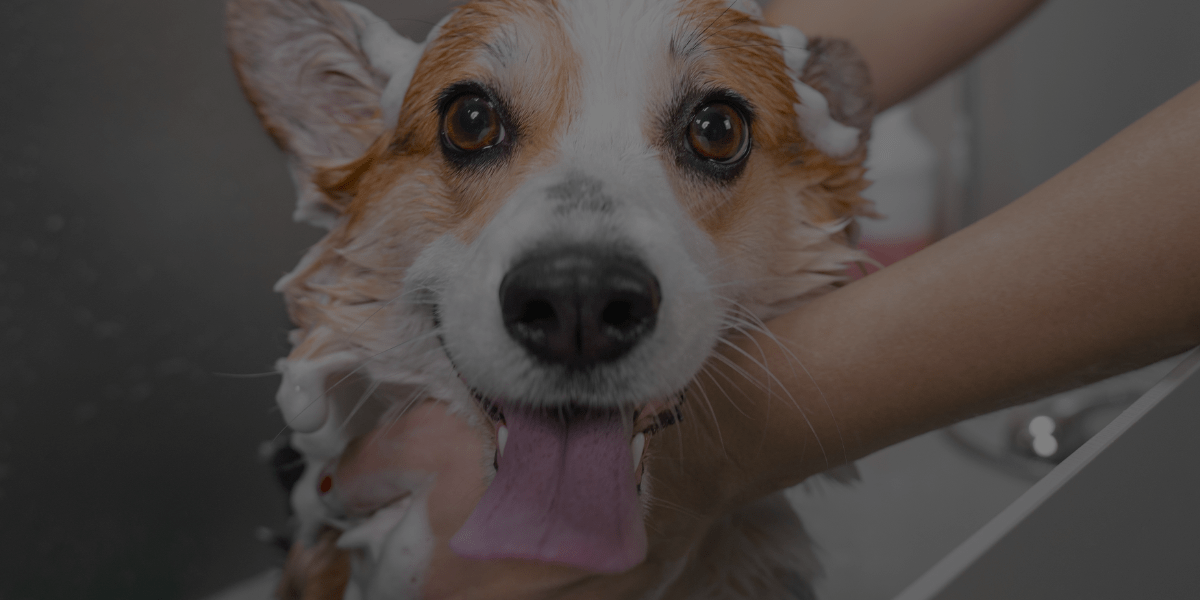Recently, we took a look at some of the most common occupational health hazards that a dog groomer faces on the job. Today, we’re going to look at the other end of this spectrum: the common health hazards posed to the dogs themselves when getting groomed.
If you’re looking to start a dog grooming business or join a salon, this will be worth the read. By knowing the types of risks dogs face when in your care, you can help better ensure their overall safety.
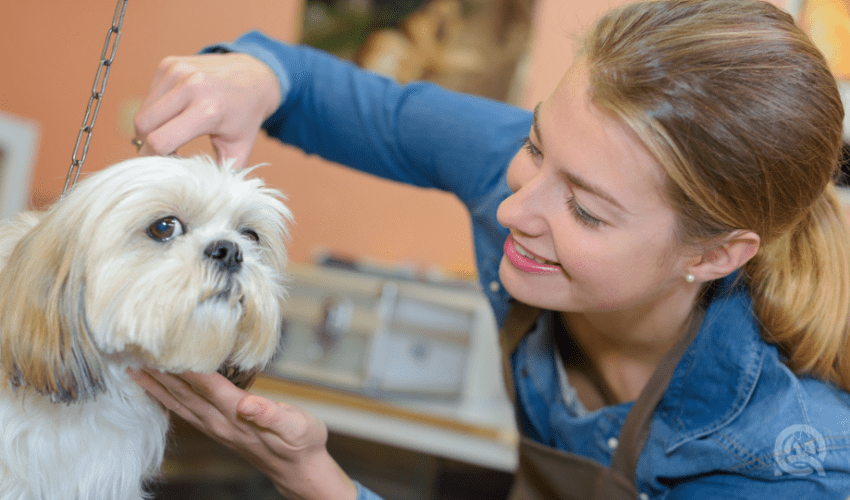
1. Clippers, burns, and other nicks
This is applicable in all cases when using clippers, but especially when the dog has really matted fur. If matted hair sits close to the skin, the chances of accidentally nicking Fluffy by getting too close with the clippers are higher.
When a dog is clipped a little too close to his skin, it can lead to irritation and sensitivity. Certain areas on dogs, such as their hind quarters, are more sensitive than others. Should Cujo be get razor rash, nicked, or cut in these sensitive areas, he’ll likely experience an uncomfortable itchiness afterwards.
Even if the initial damage is small, a dog can unintentionally make it worse in the aftermath if he starts scratching or licking at it!
How to prevent this:
Of course, you should never clip your client’s pooch with haste or lack of training. Take the proper time, care, and execute your tools with precision. Know your different blades. Understand where and when to use each one.
If the dog has mats that are closer to the skin, use a comb and try to gently draw them further away before you do any clipping. If this proves impossible, it may be worth it to shave the dog altogether.
Having an emergency First Aid kit on-hand is recommended, should a more serious injury accidentally occur. At the very least, you should have the following items at your disposal:
- Peroxide
- Gauze
- Antibiotic cream
- Lidocaine spray
Importantly, ensure that you inform your client of any and all injuries when they arrive to pick up their pup. Don’t try and hide it from them. If the injury were ever to get worse or become infected and the client wasn’t made aware of the situation, you could have a lawsuit on your hands!
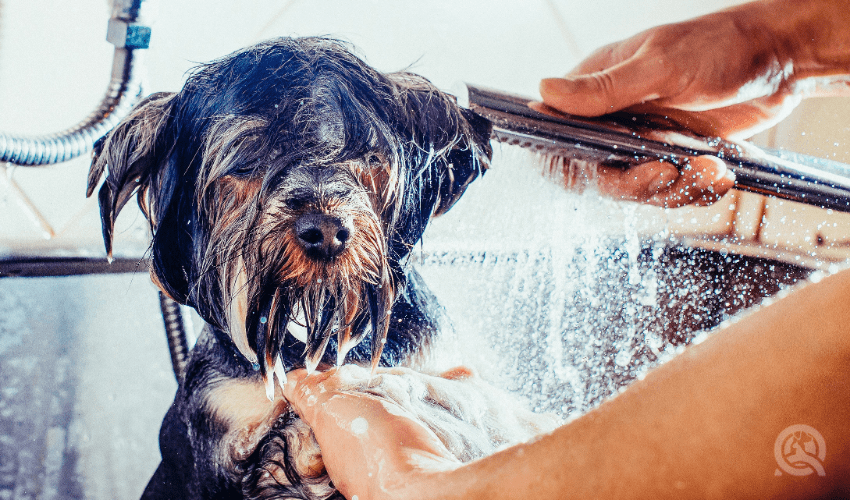
2. Soap in the eye
Soap in a dog’s eyes can lead to disaster! Breeds with bulging eyes – such as Pugs and Pekingese – are especially susceptible to this risk. When soap gets into a dog’s eyes, some of the consequences can include:
- Corneal abrasions
- Ulcerations
- Burns
- And more!
On top of this, when a dog’s eyes get irritated, he may be inclined to try and scratch at it, in an effort to relieve the itch. Unfortunately, this can often make things worse and lead to infection (both bacterial and fungal).
How to prevent this:
For starters, ALWAYS make sure that all products you use, such as shampoo, are specifically made for dogs. Be extra careful when using any product on a dog’s face – and especially around his eyes! If anything gets into his eyes, immediately rinse the area with eyewash for approximately 10 minutes.
Make sure to tell the owner right away. Should the situation warrant a trip to the vet, eye drops may need to be prescribed. So again, it’s important that your client know what happened.
3. Cutting the quick
The quick of a dog’s nail is the core of the nail bed. It’s also a blood vessel and contains nerves. Cutting it will not only make a bloody mess, it’ll be very painful for the dog. In worst-case scenarios, it can lead to infection. No one with a heart wants any of this – much less a professional groomer!
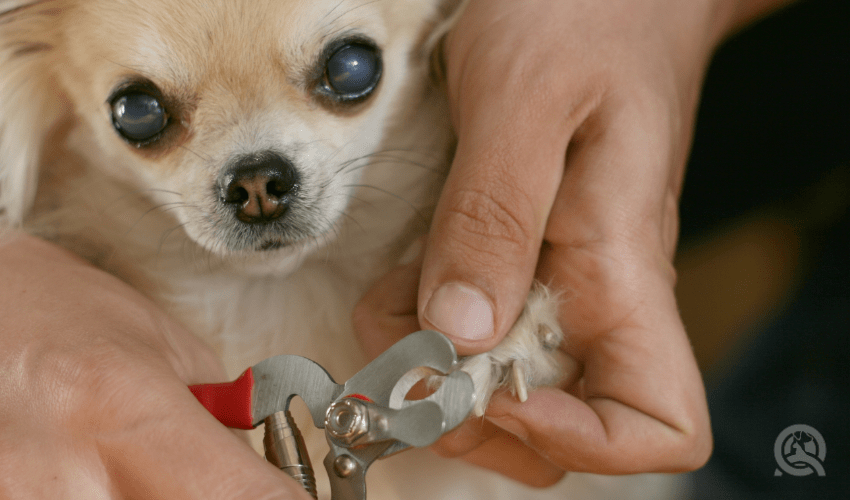
How to prevent this:
First, stay calm. Your client’s dog is probably now a bit panicked as it is; they don’t also need to feel your anxious energy, too. That’s only going to make things worse. Even if you’re freaking out on the inside, try to remember to take a breath and maintain your composure. You can fix this!
The quickest way to stop the bleeding is to use styptic powder. As a professional dog groomer, this is a product you absolutely NEED! It’s an antihemorrhagic agent that contracts the blood vessel and helps the blood to clot.
In the event that you accidentally cut the dog’s quick, styptic powder will staunch the blood flow. It’ll also help reduce the likelihood of infection and provide some immediate pain relief for the pooch. You can find more thorough instructions for applying styptic powder to a dog’s nails here.
As with the previous risks noted already, we can’t stress enough how important it is to notify your client of this injury. It doesn’t matter how minor it may be, they still need to know!
4. Swimmer’s ear
Certain dog breeds have floppy ears. Beagles, Poodles, English Cocker Spaniels, Bloodhounds, Coonhounds, and Basset hounds are just some examples. Dogs with floppy ears are more prone to ear infections.
These ear infections are similar to the ‘swimmer’s ear’ (medically known as Otitis Externa) that people can get. The symptoms are most commonly:
- Pain (which can be anywhere from mild to severe)
- Difficulty hearing properly
- Itchiness and overall irritability
- Pus or fluid leaking from the ear canal
If you’ve ever had an ear infection, you know how debilitating it can be. Imagine how that would feel to a dog!
How to prevent this:
Especially when dealing with floppy-eared dogs, it’s important that you don’t get water in the ears when bathing them. As a precaution, you can place large cotton balls in Buddy’s ears before his bath. Just make sure they’re not too small, and definitely don’t shove them deeply into the ear canal. Once the bathing process is over, remove them immediately.
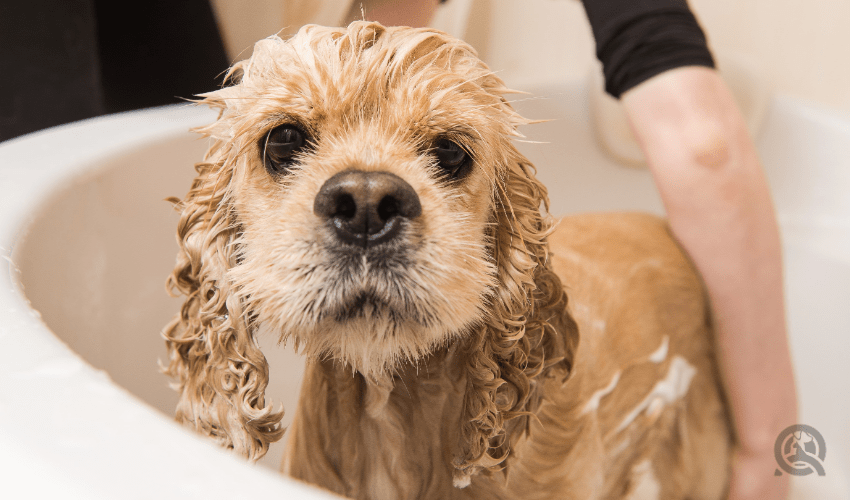
It also wouldn’t hurt to give the dog’s ears a once-over after his bath, too. This way, you can make sure they’re completely dry. If any water happened to get into his ears, you’ll be able to deal with it right away.
For clients with floppy-eared canines, it would be worth it to educate them on the common signs and symptoms of doggy swimmer’s ear. That way, they can be on the look out after every groom – just to be safe! Some dead giveaways that a dog may have ear irritability are:
- Excessively scratching/pawing at his ears
- Redness in the ear canal
- Pain when his ears are touched
- Shaking his head a lot
5. Self-hanging
Arguably, the biggest risk to a dog’s health at the groomers is accidentally injuring themselves on the grooming loop. Sometimes, extreme accidents can happen – some of which can be severely dangerous or even fatal. Occasionally, you’ll encounter dogs that either have lots of energy or are resistant to you.
Whatever his reasons may be, it can result in him trying to jump off the table. Doing so while his head is still in the collar can result in self-hanging, if not intervened in time.
We know, none of us want to think of this scenario. But as a professional groomer, you need to be fully aware that although infrequent, it IS a possibility.
How to prevent this:
Always keep an eye on your client’s dog and always stay within arm’s reach of the dog. Never ever leave a dog unattended while tethered on a grooming table, even for a second.
If the dog is highly stressed and shows signs of trying to get off the grooming table, focus first on easing his anxiety and calming him down. Often, just putting a soothing hand on the dog’s body can reduce his panic. If need be, you may require a second groomer to help with the job.
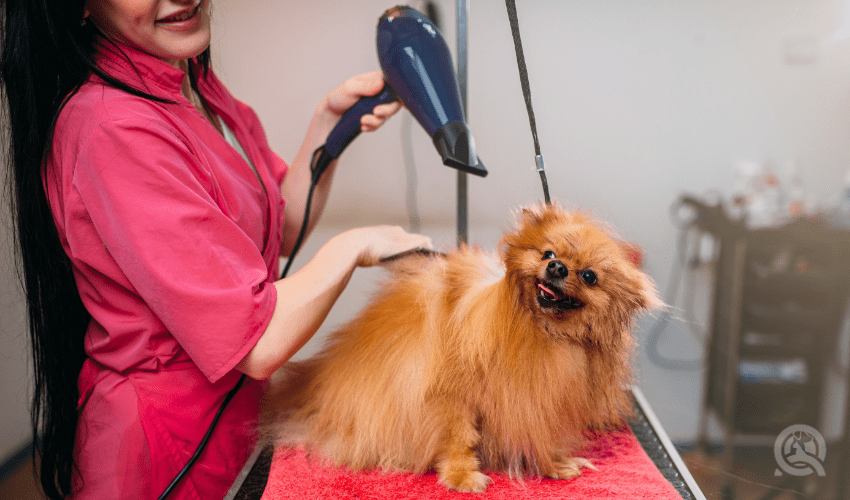
If you’re a freelance groomer without a team, recognize when a job may be too much for one person to handle. While we understand that you likely don’t want to turn down work, it may be in the best interest of both the dog and your business.
The last thing you want to do is bite off more than you can chew (excuse the pun), attempt a job that absolutely can’t be done alone, and then potentially injure your client’s pup.
Not only would the dog’s safety be in jeopardy, but your reputation could be, too. While you can learn how to take on many jobs, you also need to know your limits. Know when to refuse service.
Remember: even if your client is unhappy with your decision, they’d be devastated if something bad happened to their dog.
Ultimately, the greatest way to know how to properly handle and groom dogs is by taking actual dog grooming classes and learning from trained experts. While being aware of all of the above safety risks is critical, you first need to know the foundation!
If your goal is to start a dog grooming business or join a salon, getting the proper education, training, and certification are the single best ways to ensure ALL dogs will be safe in your care!
